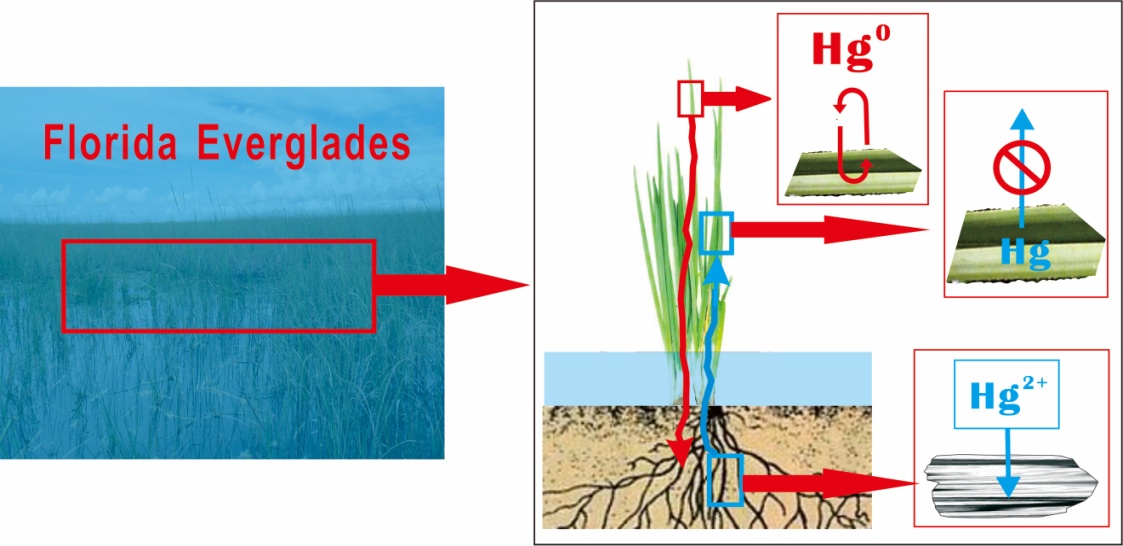Scientists Reveal Roles of Macrophyte in the Biochemistry Cycle of Hg in Wetland
Mercury (Hg) has received great attention as a global pollutant due to its ability to undergo methylation, accumulation, and biomagnification in aquatic food chains. Wetlands are widely known as sites for methylmercury (MeHg) production, and are generally considered net sources of MeHg. In the Florida Everglades, MeHg is biomagnified and can reach high levels in fish and fish-consumers, posing a potential threat to wild animals. Emergent macrophytes in the Everglades are important contributors to Hg exchange between the atmosphere and substrate sediments. The role of macrophytes within the Everglades as sources or sinks of atmospheric Hg is not well understood due to technical limitations. Therefore, large uncertainty was unavoidable when estimating the global/regional natural emission of Hg0 over air-foliar surface.
To address the questions shown above, Dr. Bo Meng from Institute of Geochemistry, Chinese Academy of Sciences cooperated with Professor Yong Cai from Florida International University to characterize the role of sawgrass in Hg cycling in the Everglades. In this study, stable isotope tracer techniques were employed to investigate Hg uptake by sawgrass (Cladium jamaicense) from soil and from the atmosphere pathways, and the fate of Hg after absorption.
This study suggested that soil spiked 201Hg2+ was rapidly taken up by roots and transported to aboveground parts. The spiked 201Hg that was transported to the aboveground parts was trapped; no release of the spiked 201Hg from the leaf to the air was detected (Fig. 1). Atmospheric 199Hg0 exposure experiments revealed that the majority of the previously deposited 199Hg0 taken into the leaf was fixed, with a very limited proportion (1.6 %) available for re-emission to the atmosphere (Fig. 1). The percentage of 199Hg0 fixed in the leaf will help reduce the model uncertainty in estimating the Hg0 exchange over air-vegetation surface.
The researchers further proposed that sawgrass needs to be viewed as an important sink for atmospheric Hg0 in the regional Hg mass balance. This information would have important implications for the critical loads of Hg to the Everglades. Furthermore, this study provides useful information for creating models of natural deposition of Hg and fills gaps in understanding of the role of wetland vegetation in the biogeochemical cycling of Hg in the Everglades. The multi-isotope tracer technique could be an effective tool to identify the role of plants in biogeochemical cycling of Hg in other ecosystems.

Fig.1 Role of sawgrass in Hg cycling in the Everglades
Dr. Bo Meng was supported by Postdoctoral Fellow in Professor Yong Cai’s group at Florida International University. All samples containing enriched Hg isotopes were analyzed at the Department of Chemistry & Biochemistry, Florida International University. This study was recently published in Environ. Sci. Technol. (2018, 52, 3384-3391).
Contact:
BO MENG
Institute of Geochemistry, Chinese Academy of Sciences, China.
YONG CAI
Department of Chemistry and Biochemistry, Florida International University, USA.
(By Prof. Xinbin Feng’s group)
附件下载: